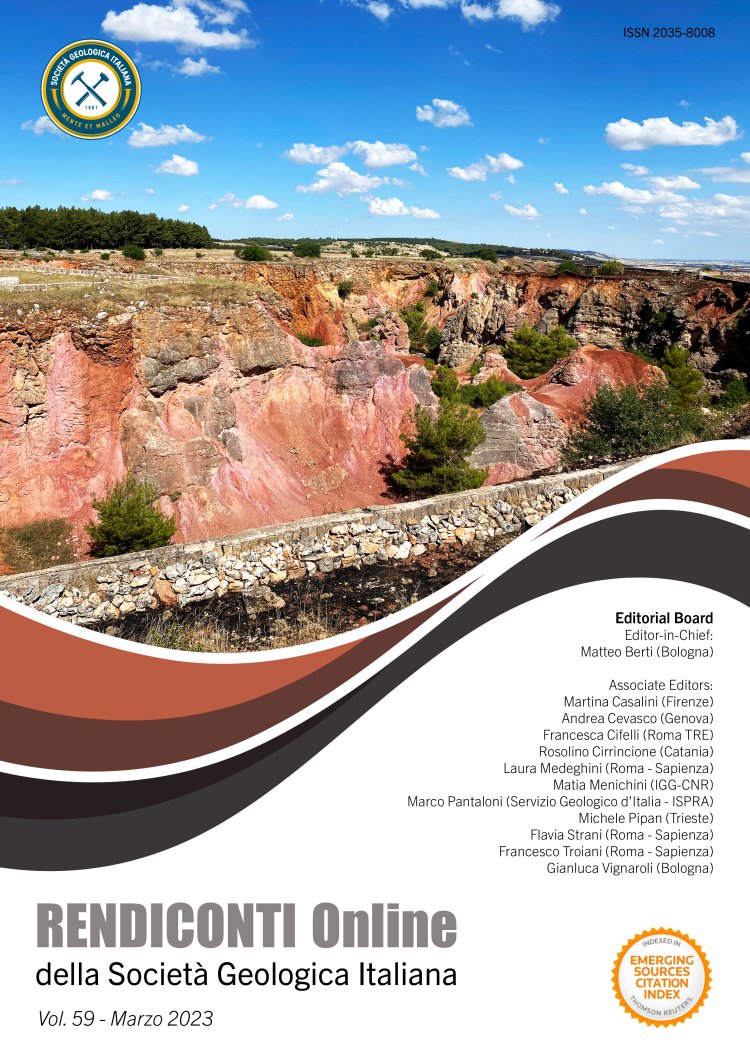
The Bolognano Fm in the south-eastern sectors of Majella and correlation with the north-western domain
Marco Brandano1,2, Irene Cornacchia3, Letizia Di Bella1 & Diego Marianelli1
1Dipartimento di Scienze della Terra (DST), Sapienza Università di Roma, Piazzale Aldo Moro 5, 00185 Rome, Italy.
2Istituto di Geologia Ambientale e Geoingegneria (IGAG), Consiglio Nazionale delle Ricerche (CNR), c/o Sapienza Università di Roma, Piazzale Aldo Moro 5, 00185 Rome, Italy.
3Istituto di Geoscienze e Georisorse (IGG), Consiglio Nazionale delle Ricerche (CNR), Via Giuseppe Moruzzi 1, 56124 Pisa, Italy.
Corresponding author e-mail: marco.brandano@uniroma1.it
Volume: 59/2023
Pages: 112-118
Abstract
This work investigated the evolution of the Bolognano Fm in the southern portion of the Majella Mountain and correlated it with the northwestern sector. Here the Bolognano Fm overlies unconformably the Eocene deposits of the S. Spirito Fm. The first unit is the Burdigalian Bryozoan Calcarenite, overlain by the Hemipelagic limestone to calcareous marls Burdigalian to Langhian in age. Lastly, the Tortonian to early Messinian interval is represented by different units. The first unit, which unconformably overlies the hemipelagic limestone to calcareous marls, is the Bioclastic calcarenites unit, which is fed by sediments produced within a euphotic inner ramp and accumulated in a deep environment. Upwards, the Marly limestones and laminated calcareous marls unit shows a mixing of deep water and shallow skeletal components deposited in an outer ramp. Moving southward, the Coralline algal limestone crops out, identifying a productive middle ramp environment. Lastly, a coral limestone unit was identified, where coral bioconstructions interfinger with seagrass meadows and ooidal shoals, in the euphotic zone. The Marly limestone and laminated calcareous marls testify for a deterioration of environmental conditions due to both global climate change as well as the approaching of the Apennines accretionary wedge, which triggered an increase of terrigenous runoff.
Keywords
Get Full Text